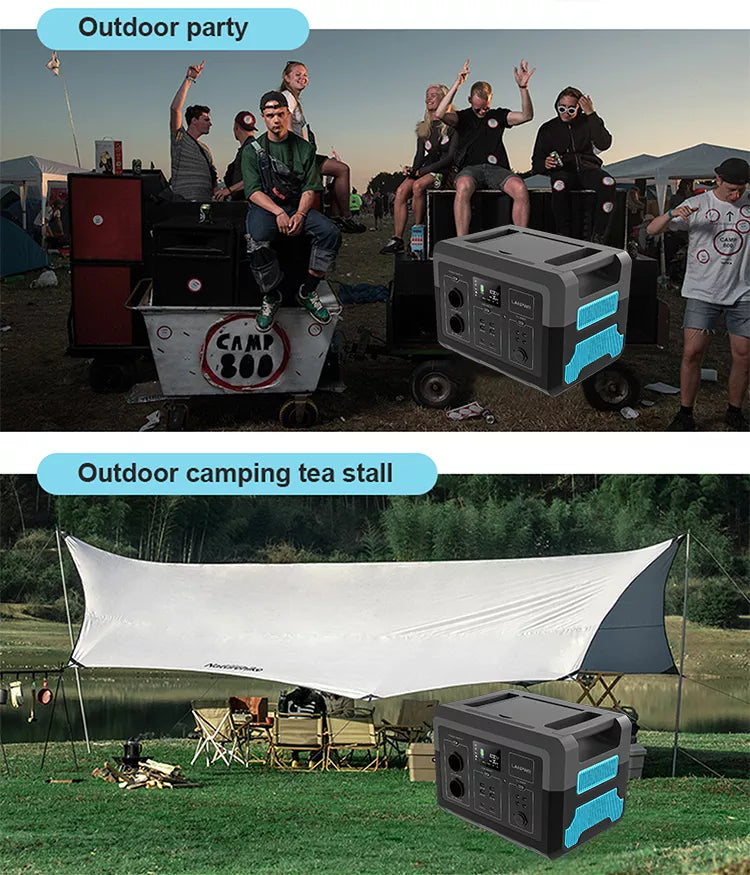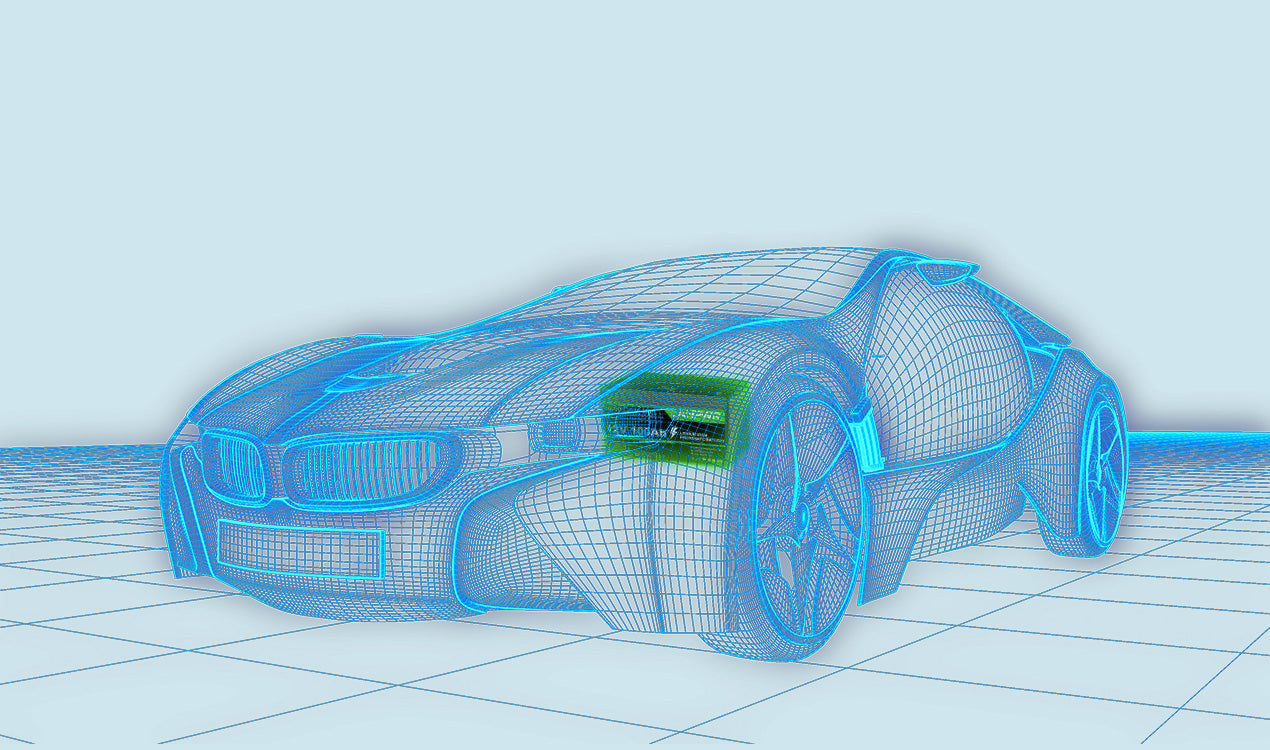Portable power stations changed the way we interact with and use energy in off-grid, off-the-map locations. With upcoming technology enhancements, the sky is the limit for how efficient, powerful, and user-friendly these devices can become. This post looks at the forms in which technology is projected to develop portable power stations, turning them into must-haves for individuals taking pleasure in the outdoors camping or just needing dependable electrical power if out and about.
1. Increased Battery Efficiency
Battery Tech Improvements
Battery Efficiency - One of the least addressed features that require an upgrade on many portable power stations. The current crop of production models utilizes lithium-ion batteries due to their energy density, weight, and cost benefits. But battery tech of the future could mean we have even longer-lasting power stations still
Solid-State Batteries
One such technology is solid-state batteries that could eventually succeed the now-ubiquitous lithium-ion technology. This one uses solid electrolytes instead of liquid, which makes energy storage more dense, eliminates the risk of overheating, and extends the battery lifespan. Portable power stations would weigh less and hold more charge per volume with these batteries.
Graphene Batteries
Graphene batteries are also an exciting breakthrough. Whereas graphene is a single layer of carbon atoms in a hexagonal lattice and has extraordinary electrical conductivity and granular strength. So, with the ability of Graphene batteries to reach extremely high charging rates and offer very long life cycles to a point that they can be 3D printed - this would add even more value in terms of lifespan and energy capacity for portable power stations.
2. Catalyst Solar Charging Difficulties
Solar Technologies with TetraShell Integration
One function that many portable power stations, for example, must have is solar charging, so this 4KNUX charger will probably draw a lot of attention. As technology for solar PV panels improves, it is likely this feature will only get more efficient and easier.
Perovskite Solar Cells
Perovskite solar cells are a new technology that has the potential to be more efficient and cheaper to produce than traditional silicon-based solar cells. Such cells can be elastic and very light, making them attractive for embedding in mobile stations. If perovskite technology becomes reliable and efficient enough, it would make for faster-charging solar power stations.
Multi-Junction Solar Cells
Multi-junction solar technologies have several subcells of different materials, capturing a wider swath of the solar spectrum, which substantially improves their performance. Integrating these high-speed solar cells into portable power stations, users could get more power out of the same amount of sunlight which helps in making solar charging viable in different conditions.
3. Better energy management Systems
Smarter Energy Distribution
As portable power stations continue to evolve, we can expect to see more advanced energy management systems that are designed to use and distribute stored power in the most efficient and optimized manner. Such systems could be fine-tuned with the help of advanced algorithms and artificial intelligence to adapt power output to operators' usage patterns and device needs.
AI-Driven Energy Management
Energy Management with AI Artificial Intelligence (AI) has played a fundamental role in improving Energy management User behavior could be learned by AI algorithms and future power needs predicted, which in turn resulted in the dynamic adjustment of supply to guarantee an optimal level of performance. For instance, the power station might charge more mission-critical devices first and lower output to non-mission-critical devices when the battery needs to be recharged.
Integrated Energy Monitoring
Furthermore, advanced energy management systems could provide even real-time monitoring and reporting, giving users an insight into their power consumption and available capacity (on batteries). Having such a view wirelessly would enable users to better plan their fuel consumption enabling them to never go out of power all of a sudden.
4. Durable and portable
Durable and Light Materials
Given that portable power stations find application in rugged outdoor environments, improving their robustness and portability is of paramount concern. 306,000 - could be the key to more resilient and lighter hardware. Materials are more advanced than ceramics used in power stations.
Carbon Fibre And Other Advanced Polymers
With the use of new lightweight materials such as carbon fiber and advanced polymers, manufacturers could design power stations that are both durable and light in weight. These materials boast high strength-to-weight ratios which should make the power stations more portable while still contributing to military-grade durability.
Water and Dust Resistance
The portable power stations of the future could also debut with improved water and dust resistance to make it possible for them to survive in several harsh conditions. Better sealing methods and the use of more water-resistant materials could go a long way toward making them weatherproof.
5. Higher-Level of Connectivity & Smart Features
Smart Devices Integration
Portable power stations are unlikely to get more connected with smart features that let you control and keep an eye on them more conveniently in the not-so-distant future.
Cloud Integration with IoT
Portable power stations could communicate wirelessly with other smart devices to allow full control and monitoring, through integration with the Internet of Things (IoT). For instance, they could monitor the status of their power station via a smartphone app, be alerted in case the battery is running low, or be able to control the power distribution system from anywhere in the country.
Voice Control and Automation
A combination of voice control and automation features would further improve the overall user experience. Picture yourself asking your power station how much battery is left to instruct it to start charging particular things organization-wide, all by voice delivery. All these smart features add so much to the ease of use making portable power stations super user-friendly.
6. Faster Charging Times
Rapid Charging Technologies
Well, the progress in technology will also come down to effect and we can obtain much faster charging time for portable power stations. With faster-charging technology, it will ensure more convenient recharge for users as they work to keep the downtime low and availability up.
Fast-Charging Protocols
The power stations of the future could end up using fast-charging protocols identical to smartphones and electric vehicles. These protocols facilitate rapid charging which is made safe by ensuring no battery damage, thus providing users with a quick stop at the power station and can continue their activities.
High-Power Charging Ports
While these portable power solutions are going to be charging even faster, portable power stations in the future might even have high-power charging ports, that could serve 100W chargers. This would be especially effective in charging larger appliances and devices with higher power requirements.
7. Modular and Expandable Designs
The second characteristic of too-common design on segmenter modules is a tiny bit less odious than the first and that is modularity. Too many implant companies brag about how their designs are "modular" which we are all supposed to believe means that it's a great thing and will result in decreased costs, better quality, and happier patients as far as we can figure, but I haven't figured out just yet how this is accomplished.
Customizable Power Solutions
In the future, and that day might be soon, we could imagine modular and expandable designs becoming a staple in portable power stations that will help users tailor their source of power according to what he or she truly needs.
Stackable Batteries
Stackable batteries - The battery can be built in modules so that users can add or remove as many battery blocks as they need depending on power requirements. Such flexibility would enable users to carry more power for extended trips, or else go lighter on battery capacity for more everyday use.
Interchangeable Components
Likewise, interchangeable components like some sort of charging port or power inverter can also make portable power stations versatile. Instead, customers could select from a menu of components to build their power station making it as efficient at its intended use as possible.
8. Bigger capacity as well as more power
Higher Capacity Batteries
However, as with past batteries new tech comes with a bump to both the capacity (higher Wh) and power (W or kW) of such a portable power station in the future. This bump will translate to the ability to run more devices, for more time, and therefore make portable power stations even more versatile for a broader set of circumstances.
High-Energy-Density Batteries
Low weights, coupled with high-energy density batteries like graphene, will allow portable power stations to contain even more energy in the same size space without adding anything to the total weight. It's a move that should especially pay off for the car campers and trail trekkers in search of significant power without massive, heavy batteries.
Enhanced Power Inverters
With better power inverters, these portable power stations can provide more wattage so you can use more performance-demanding devices and appliances. This function will broaden the scope of usage of portable power stations and can be used to supply small electronics or accommodate larger equipment.
9. Sustainable, Eco-Friendly characteristics
Eco-friendly Options
With the rising environmental issues, the upcoming portable power stations might be manufactured with more sustainable and eco-friendly features.
Recycled & Recyclable Materials
Portable power stations could be built by manufacturers with recyclable and biodegradable materials so they are better for the environment. Those materials would enable reduce waste and build a path toward sustainability in production.
Energy-Efficient Components
Components that are more energy efficient, from advanced power converters to low-power displays can also help make portable power stations less impactful on the environment. These first two devices are built with energy optimization in mind which would give you solid power without overutilizing resources.
Summary,
There is a great future for portable power stations and with the upcoming technological advancements they will enhance the performance, utility, and ease of use. These could range from better battery technologies and more effective solar charging capacity to smarter energy management systems and increased connectivity, all of which would make portable power stations even more worthwhile for people who enjoy outdoor activities but don't have access to reliable grid power. With this, we can expect the future will bring more powerful and efficient battery-powered portable power stations which are also ecologically friendly. For this reason, we will continue with our development of new technologies to ensure that in the years ahead the benefits of portable power stations are matched by no others.














Leave a comment
This site is protected by hCaptcha and the hCaptcha Privacy Policy and Terms of Service apply.